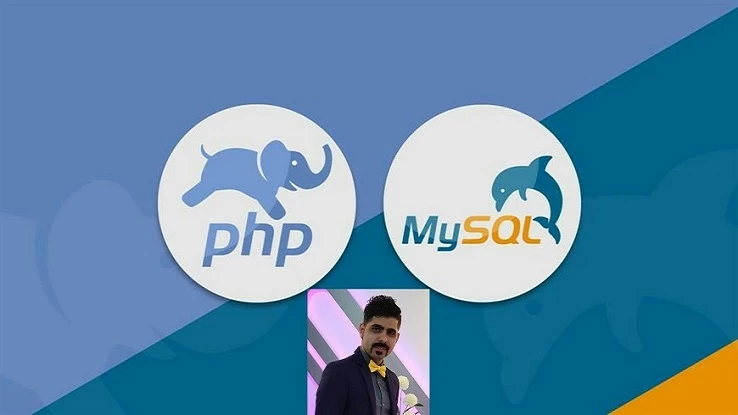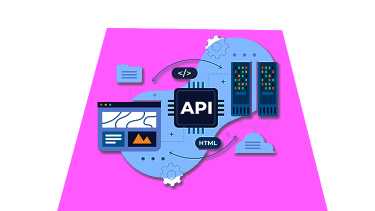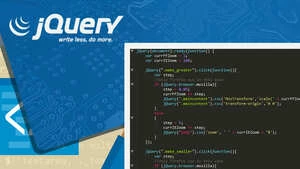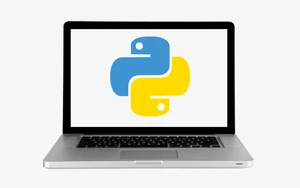In today’s software development landscape, choosing the right programming language is crucial for project success. With the rapid advancement of technology and evolving industry demands, staying informed about the top programming languages can give developers a significant advantage. This detailed guide ranks the top 10 programming languages of 2024, highlighting their strengths, weaknesses, and applications.
The field of programming has never been more dynamic. The choice of language can significantly impact a project’s performance, scalability, team productivity, and long-term maintainability. But how do you determine which language best suits your needs?
To address this question, we analyzed data from the 2024 Stack Overflow Developer Survey, which included over 70,000 responses from developers worldwide. We also incorporated insights from the GitHub Octoverse Report 2024, which tracked contributions and trends across millions of repositories. These findings were cross-referenced with the TIOBE Index and language popularity estimates based on search engine queries. Additionally, we examined job market demand using data from Indeed, Glassdoor, and LinkedIn to identify which languages are most sought after by employers.
This article aims to guide you in making an informed decision by evaluating the top 10 programming languages of 2024 in terms of popularity, job demand, versatility, community support, and future trends. Whether you’re an experienced developer seeking to expand your skills or a newcomer to the field, this guide has valuable insights for everyone.

Java Essentials: Mastering the Fundamentals
Last Updated: 2024-05-29
Discover the World of Java Programming: From Setup to Advanced Techniques, Mastering Every Aspect of Java Fundamentals
Mastering popular programming languages can unlock lucrative job opportunities and diverse career paths. Discover the top programming languages suited for both beginners and advanced developers. We offer insights into the best languages to learn, highlighting those that command the highest salaries.
1. Python
Python is a high-level, interpreted language known for its emphasis on readability and simplicity. It supports multiple programming paradigms, including procedural, object-oriented, and functional programming. With its extensive standard library and a robust community, Python is a versatile choice for a range of applications, from web development to data science.
- Strengths: Python is highly versatile, features extensive libraries, has strong community support, and is easy to learn. It is especially recognized for its applications in data science and machine learning, with popular libraries such as TensorFlow and Pandas.
- Weaknesses: Python can be slower compared to compiled languages, which may affect performance in applications where speed is critical.
- Use Cases: Python excels in data science, machine learning, web development, and automation. It is particularly favored by data scientists and is prominent in academic settings.
- Popularity: Python consistently ranks near the top in developer surveys and job postings. The 2023 Stack Overflow Developer Survey lists Python as the most desired and the second most loved programming language.
- Libraries/Frameworks: Notable libraries and frameworks include TensorFlow, Django, Flask, and Pandas.
2. JavaScript
JavaScript is a high-level language primarily used for web development. It powers dynamic content on websites and is supported by all modern web browsers. With the advent of Node.js, JavaScript has also become widely used for server-side development, establishing itself as a key language in full-stack development.
- Strengths: JavaScript is essential for web development, boasts a vast ecosystem, and supports asynchronous operations. It plays a crucial role in modern web development, greatly enhanced by its frameworks and libraries.
- Weaknesses: Managing large codebases and dealing with browser inconsistencies can be challenging. The language’s dynamic nature and variations across browsers often complicate debugging and maintenance.
- Use Cases: JavaScript is vital for front-end and back-end development, particularly with Node.js, and is central to full-stack development. Its role in creating interactive web applications makes it indispensable for web developers.
- Popularity: JavaScript is highly sought after by web developers and remains in high demand. According to the Stack Overflow Developer Survey 2023, it has been the most used programming language for ten consecutive years.
- Libraries/Frameworks: Key frameworks include React, Angular, and Vue.js.
3. Java
Java is an object-oriented, class-based language designed to minimize implementation dependencies. Its system independence is facilitated by the Java Virtual Machine (JVM). Today, Java is extensively used in enterprise environments, Android app development, and large-scale systems.
- Strengths: Java’s platform independence, performance, and maturity are key advantages. The “write once, run anywhere” capability makes it highly valuable for cross-platform applications.
- Weaknesses: Java’s verbose syntax can lead to longer, more complex code, making it more challenging to write and maintain. Additionally, it has slower startup times.
- Use Cases: Java is widely used for enterprise applications, Android development, and big data projects. It is central to both enterprise solutions and Android app development.
- Popularity: Java remains highly popular in large enterprises and Android development. According to the TIOBE Index 2023, it consistently ranks among the top 5 programming languages.
- Libraries/Frameworks: Notable frameworks include Spring, Spring Boot, Hibernate, and Vaadin.
4. C#
C# is a modern, high-level object-oriented programming language created by Microsoft. As a key component of the .NET ecosystem, it is designed to be simple, robust, and versatile, enabling developers to build a wide range of applications, including desktop, web, and mobile apps.
- Strengths: C# integrates seamlessly with the .NET ecosystem, is robust, and user-friendly. It excels in Windows application development and supports contemporary programming paradigms effectively.
- Weaknesses: While .NET Core has expanded its reach, C# is still predominantly associated with Microsoft platforms, which may limit its use outside the Microsoft ecosystem.
- Use Cases: C# is the primary language for game development with Unity and is widely used in enterprise applications. It is a preferred choice for developing games and enterprise software.
- Popularity: C# is highly valued in both enterprise environments and game development. It remains a top choice for developers working within the Microsoft ecosystem.
- Libraries/Frameworks: Key frameworks include .NET Core and ASP.NET.
5. C++
C++ extends the standard C language with object-oriented features, offering high performance and efficiency. Its capabilities make it ideal for system programming, game development, and applications requiring real-time processing.
- Strengths: C++ provides high performance and low-level memory manipulation, giving developers granular control over system resources. This makes it particularly suited for high-performance applications and system programming.
- Weaknesses: The language’s complex syntax and extensive feature set can present a steep learning curve, potentially overwhelming newcomers and requiring a deep understanding for effective use.
- Use Cases: C++ is widely used in system programming, game engine development, and performance-critical applications. It is a key language for creating operating systems, game engines, and real-time simulation systems.
- Popularity: C++ consistently ranks highly in system-level programming and high-performance applications, often appearing at the top of the TIOBE Index.
- Libraries/Frameworks: Notable frameworks include Qt and Boost.
6. PHP
PHP is a server-side scripting language primarily used for web development but has also been employed as a general programming language. It is widely utilized for creating dynamic websites and Content Management Systems (CMS).
- Strengths: PHP is easy to learn, benefits from a large support community, and is highly effective for web development. Its strong integration with databases like MySQL and ease of deployment further enhance its appeal.
- Weaknesses: PHP faces security vulnerabilities and performance issues on a large scale. Its dynamic nature can lead to security risks, and its speed is often surpassed by newer languages.
- Use Cases: PHP is extensively used in web development and for building Content Management Systems. Many popular websites and CMSs, such as WordPress, rely on PHP.
- Popularity: PHP remains highly prevalent in web development, holding about 75% of the market share in CMS platforms like WordPress. It continues to be a major player in web development.
- Libraries/Frameworks: Key frameworks include Laravel and Symfony.
7. Ruby
Ruby is an open-source, dynamic language designed to prioritize ease of use and productivity, featuring a clean and readable syntax that simplifies coding.
- Strengths: Ruby is highly readable, has a simple syntax, and boosts productivity, particularly with its powerful web development framework, Ruby on Rails. It is praised for its developer-friendly nature and rapid development capabilities.
- Weaknesses: Ruby tends to have slower runtime performance compared to other languages and is less common in enterprise settings, which can be problematic for performance-critical applications.
- Use Cases: Ruby is widely used for web development and scripting. It gained significant attention with the Ruby on Rails framework, known for enabling rapid web application development.
- Popularity: Ruby, popularized by Ruby on Rails, continues to be a preferred choice for startups and web development projects.
- Libraries/Frameworks: Notable frameworks include Ruby on Rails and Sinatra.
8. Swift
Swift is a powerful and intuitive programming language designed for macOS, iOS, watchOS, and tvOS. It offers an interactive and enjoyable development experience, featuring a syntax that is both concise and expressive, along with modern features that developers appreciate.
- Strengths: Swift boasts a modern syntax, built-in safety features, and high performance. It is designed to be safe by default, minimizing common coding errors and optimized for efficiency.
- Weaknesses: Swift is primarily confined to Apple’s ecosystem, and its community is smaller compared to other languages. Despite its rapid growth, Swift’s use is largely limited to Apple platforms.
- Use Cases: Swift is primarily used for developing applications on iOS and macOS. It is specifically tailored for creating software for Apple devices.
- Popularity: Swift’s popularity is growing rapidly, especially for mobile development on iOS. Its adoption among mobile developers continues to increase.
- Libraries/Frameworks: Key frameworks include SwiftUI and Vapor.
9. R
R is a language and environment designed for statistical computing and graphics. It is highly extensible, offering a broad range of capabilities and techniques, making it a popular choice for data analysis and academic research.
- Strengths: R is specialized for statistical computing and data visualization, featuring extensive libraries for statistical analysis. It excels in data manipulation, calculation, and graphical representation.
- Weaknesses: R can be slower for general-purpose tasks and has a steeper learning curve for those without a background in statistics. It is less suited for tasks outside of its statistical focus.
- Use Cases: R is widely used for data analysis, statistical work, and academic research. It is favored by statisticians and data analysts.
- Popularity: R remains highly utilized in academia and the data science community, serving as a key tool for research and data analysis.
- Libraries/Frameworks: Notable libraries include ggplot2, dplyr, and Shiny.
10. SQL
SQL is the standard language for managing and manipulating relational databases, making it a crucial tool for querying and handling data in various contexts.
- Strengths: SQL is essential for database management and data manipulation. It excels in handling structured data and is optimized for managing and querying databases.
- Weaknesses: SQL is highly specialized and not a general-purpose programming language. Its use is confined to database-related tasks, limiting its application to contexts where databases are involved.
- Use Cases: SQL is used for data retrieval, database administration, and data warehousing. It is indispensable for any role that involves working with data.
- Popularity: SQL is widely used in data-centric roles and industries, making it a fundamental language for anyone working with databases.
- Libraries/Frameworks: SQL supports integration with various programming languages and database systems.

















